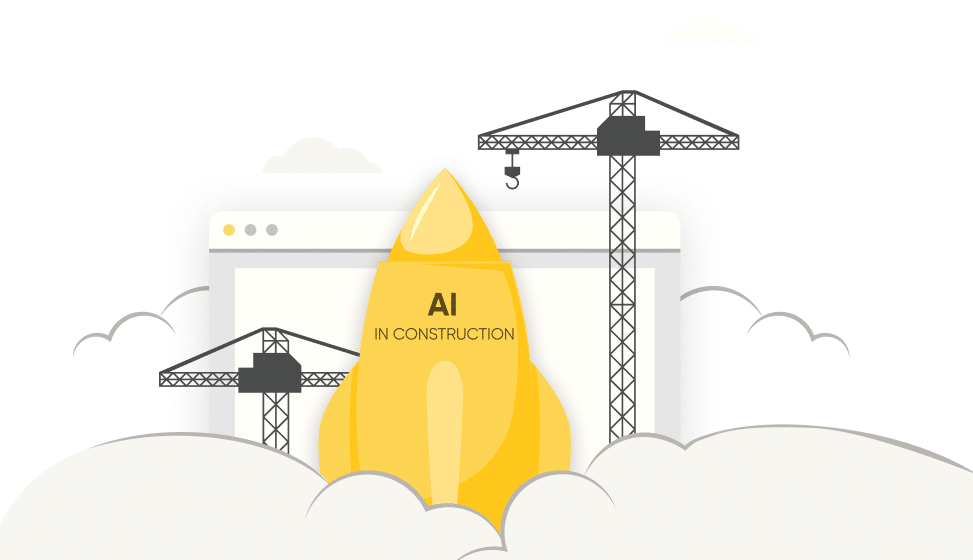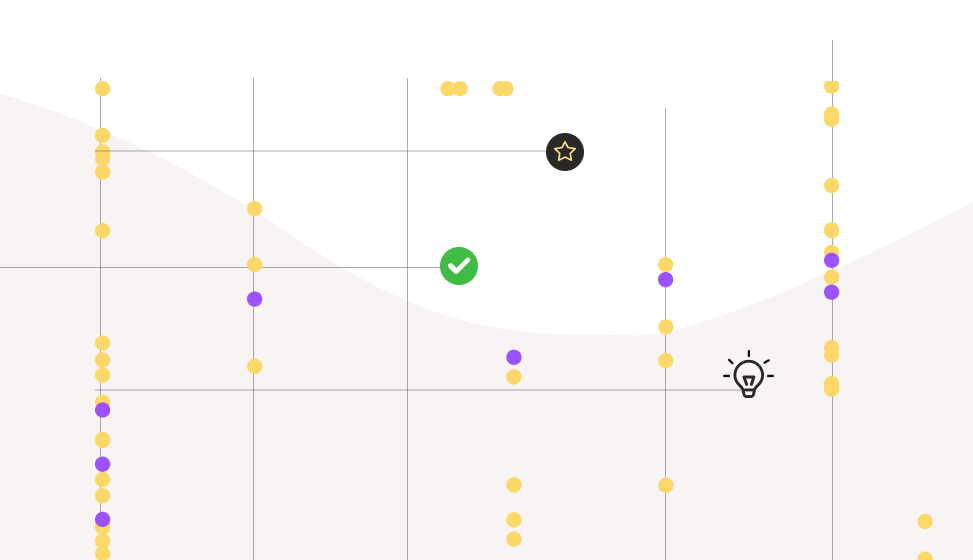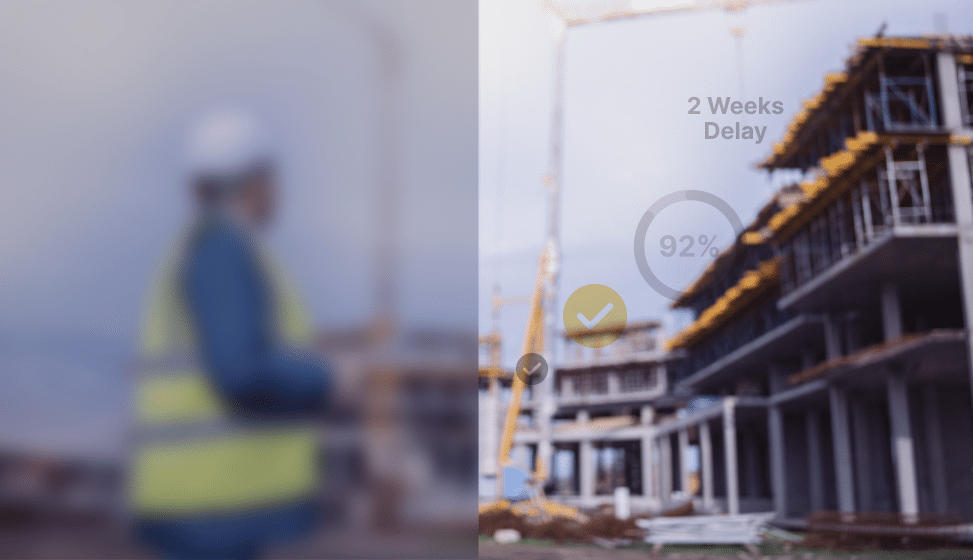From construction worker to site engineer, Suvi Partinen has been working her way up the construction “career ladder” for well on 15 years and with much success.
Working for some of the world's largest contractors, from NCC to Skanska.
She took some time out of her busy schedule to talk to the Buildots team and share her thoughts on what it's like to be a woman in construction, how the industry has changed, the challenges it faces today, and what she learned about tech adoption while working with Buildots.
Hey Suvi, lovely to meet you. Can you tell us a bit about your background and what led you to pursue a career in construction?
Suvi: I started my career in 2008 as a site worker, mainly doing building work on houses and paint jobs. I didn't have a strong pull toward construction, but after high school, I didn't know what to do, and it seemed like an OK option. My stepdad was a carpenter, so it may have come from that. But after starting, I soon realized that I enjoyed the job and was good at it, quickly learning the skills I needed. Then in 2015, I left site work and went to the University of Applied Sciences to study Construction Management, and I've been working as a site engineer for the last 5 years.
What made you decide to go back to University and study construction management?
Suvi: The main reason was the job uncertainty while working as a site worker. You could be laid off in the winter. I was laid off a couple of times, and there were months when I wondered what I would do because there were no projects available. So I wanted something more reliable. Construction management seemed a good next step, and it ended up being one of the best decisions I've ever made. I can't imagine working in any other industry than construction.
Now I work as a Production Engineer, currently working on a hospital project. My tasks include design management, schedule planning, schedule tracking, and quality assurance.
What is it like being a woman in construction?
Suvi: For me, it's been ok. I've had really good coworkers and bosses over the years, and there are a lot more women in the industry nowadays. I think that men tend to be more on-site. I don't know why it's that way. I like being on-site but right now, my work is more office based. But in engineering jobs, there are a lot of women. Actually, almost all the site engineers on my team are women. So yeah, there's been a change.
How has the industry changed since you started?
Suvi: It has improved, but it's been slow. Work has been carried out in a certain way for a long time, it's a traditional environment, and for the most part, it's stayed like that. That said, the industry has changed a lot during the years I've been working in it. For example, there's a lot more talk about workplace safety than in 2008. There's also a lot of improvement with sites going digital and the new tools we're working with.
What are the key traits you think are needed to be a good site engineer?
In my opinion, it's important to be interested in the whole picture and that you can understand the building work happening on-site. It's not just looking at the excels or at designs, you also need to understand what's happening on the site because you can only get some of what you need from what's shown on the paper.

Does your past experience as a builder help you in your job as a site engineer?
Suvi: Yeah, it has helped a lot. I already know what day-to-day life is like on-site, what happens, and what tasks they're doing. That's not to say it's impossible to be a site engineer if you don't have first-hand experience. It's not something that you need to have.
The main thing is that you are interested in what's happening on-site and ask questions. It's more important than knowing exactly how, in theory, the work is done. It's more important that you want to understand and that you can learn.
What are the biggest issues facing the construction industry at the moment? What challenges do you face on a day-to-day basis in your role?
Suvi: The biggest issues right now stem from the uncertainty of the world's situation, which has led to the energy crisis, inflation, and the availability of certain building materials. In short: everything is so damn expensive.
What challenges do you face as a Site Engineer when dealing with your on-site team?
Suvi: The site I'm working on now is massive. It's a big hospital project, with many things happening all the time. It can be hard to know if people are working in the place they should be. It's like building a puzzle – getting each group organized so they can complete everything on time. That's probably the thing most sites struggle with.
Day-to-day challenges are mainly related to communication. We need to get the right information to the right people at the right time. It's challenging and requires a lot of talking and a lot more listening.
It also takes time, which is something we lack on busy projects. Digital tools help us save time and help keep people informed. It doesn't mean we need to stop having face-to-face conversations, but if we can communicate quickly on basic day-to-day issues, it leaves us with more time for meaningful conversations and problem-solving.
What can be done to improve alignment on-site?
Suvi: We have been running a lot of short meetings to get people talking to each other and get the information we need. It is much easier to communicate with the different site teams/trades if they know each other, and then they find the best way to proceed. So it's communication, it's about a lot of communication.
What are the biggest selling points that you look for in order to choose to go ahead with implementing new technology?
Suvi: Firstly, it has to be easy to use. It should make my job easier and more fluid and not be a burden. Secondly, I need to see the value the technology adds to my work.
You were a little skeptical prior to using Buildots but open to learning. So, what was it about the Buildots platform that helped you adopt the technology and adapt to new ways of working?
Suvi: I was a bit skeptical about using Buildots at first. I had a hard time believing Buildots could get the captures and the model right. It was completely different from what we'd used before and all the other tools we had. It was more advanced.
In my opinion, one of Buildots' strengths is listening, your team really took the time to understand what we needed from your technology and how it could be improved. You made the blind spots visible. That was the biggest thing I learned from using it. On large projects, we tend to concentrate more on the bigger picture, which means loose ends can easily be forgotten. Buildots shows the actual truth about how much work there is still left to do.

Was it easy to implement in the end? How were Buildots able to improve processes on the construction project?
Suvi: So we had our weekly meetings, and I was getting new information from the platform all the time, and people were asking how we were using it. The Buildots team was very good with supporting us with that.
We had the exact data. We knew every wall, every duct. Everything that had been done the week before. So it wasn't just estimating things like we'd done in the past when we went to the building and did a site walk and would be like, ok, it looks like we're 70% done with walls – instead, it was much more accurate with Buildots. It showed us what had and had not been done and what we might not have noticed.
Of course, we knew that some walls were still unfinished, but we also had reasons for that. But it was good to know that if we thought the floor was basically finished with walls, there was still maybe 15% undone, so it made all the loose ends visible.
So we know you're a great advocate for Buildots. What was Buildots most valuable feature from your side?
The progress matrix, I found it the most informative. It was really handy. We would capture the site on Fridays, last thing at the end of the week, so that when we came back to work on Monday, we already had the up-to-date data and analysis ready to review for all work from the last week. So, I just normally started my week by opening up the progress matrix and updating myself on what had happened. Then I had really fresh data about what tasks were running on time and what was delayed, what had been done, and what hadn't been done. It was just really easy to track on that matrix, and we had a couple of contractors that were quite late with work, so we could have discussions with them straight off the bat and get things on track. So yeah, it was a really useful tool for me.





